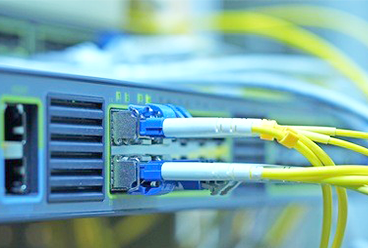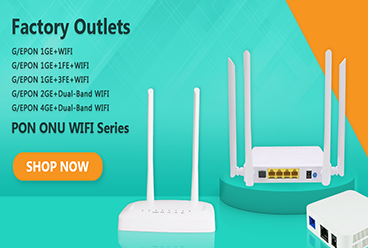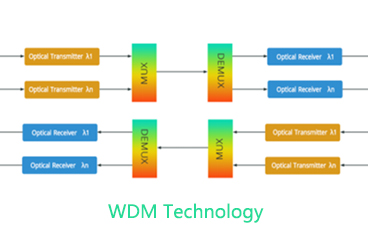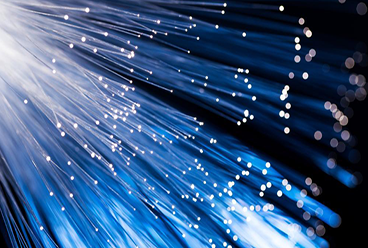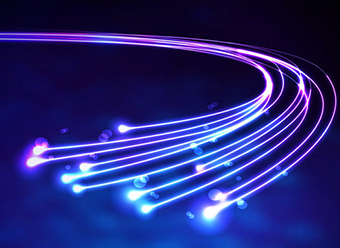With the rapid growth of data traffic and the digital transformation of various industries, selecting the right optical Transceiver is crucial for building an efficient, scalable, and reliable network infrastructure. This article provides a comprehensive overview of the most commonly used optical Transceivers, from 1G to 400G, and their typical application scenarios.
Application Scenarios of 1G SFP Optical Transceivers
● Enterprise Access Switches
● CCTV/IP Surveillance Backhaul
● Small Enterprise Networks
● Industrial Ethernet and Legacy Systems
1G SFP Transceivers (Small Form-factor Pluggable) are widely deployed in networks requiring Gigabit Ethernet connectivity. They are ideal for short to medium-reach links and provide a cost-effective solution for access and edge layer connectivity.
Application Scenarios of 10G SFP+ (SR/LR/ER/ZR)
● Data Center Aggregation and Top-of-Rack (ToR) Switching
● Metro Ethernet
● Campus Backbone Network
● Telecom Aggregation Layer
10G SFP+ Transceivers are categorized by transmission distance
SR (Short Reach): Up to 300 meters over multimode fiber (MMF)
LR (Long Reach): Up to 10 km over single-mode fiber (SMF)
ER (Extended Reach): Up to 40 km over single-mode fiber (SMF)
ZR (Zeta Reach): Up to 80 km over single-mode fiber (SMF)
These Transceivers are ideal for high-speed backbone connections and are a must-have for medium- to large-scale network infrastructures.
Application Scenarios of 25G SFP28 Optical Transceiver
● 5G fronthaul and midhaul networks
● Data Center Interconnect (DCI)
● High-density top-of-rack switch links
● Cloud computing infrastructure
SFP28 Transceivers support 25Gbps per channel, making them ideal for bandwidth-intensive environments such as next-generation mobile networks and hyperscale data centers.
Application Scenarios of 40G QSFP+ Optical Transceiver
● Core and spine layers in data centers
● Aggregation switches in enterprise networks
● Cloud service backbone networks
QSFP+ (Quad Small Form-factor Pluggable Plus) Transceivers provide four 10G lanes and are suitable for high-throughput and aggregated link environments. They are commonly used in network cores migrating from 10G to 40G.
Application Scenarios of 100G QSFP28 Optical Transceivers
● Hyperscale and cloud data centers
● Internet exchange points (IXPs)
● Large enterprise backbones
● Carrier-grade network cores
QSFP28 optical transceivers deliver 100Gbps data rates via 4x25G channels. These channels are increasingly becoming standard in core and spine switch links in modern data centers and are critical for handling cloud-scale traffic loads.
Application Scenarios of 400G QSFP-DD Optical Transceivers
● AI/ML data pipelines
● Hyperscale data centers
● High-performance computing (HPC)
● 5G and edge cloud aggregation
QSFP-DD (double-density) optical transceivers support 8 x 50G or 8 x 56G PAM4 channels, delivering 400G throughput. They are designed to meet the performance demands of next-generation networks and support ultra-high-bandwidth applications.
Application Scenarios of Copper RJ45 SFP Transceivers
● Legacy switch upgrades
● Short-reach copper cabling (Cat5e/6/6a)
● Cost-sensitive environments
● Hybrid fiber-copper networks
RJ45 SFPs support 1G/2.5G/5G/10GBase-T data transmission over standard twisted-pair copper cabling. They are ideal for extending the life of copper infrastructure while migrating to modular switch platforms.
Application Scenarios of C+/C++/C+++ GPON OLT SFPs and PX20+/PX20++/PX20+++ EPON OLT SFP
● Fiber-to-the-home (FTTH) deployments
● GPON/EPON optical line terminals (OLTs)
● Telecom central office (CO) equipment
● SP and residential broadband services
These high-power optical transceivers are suitable for passive optical networks (PONs). C+, C++, and C+++ ratings indicate increased output power and receive sensitivity, enabling longer transmission distances and more end-user connections per port. EPON and GPON Transceivers vary based on protocol standards and power budgets, PX20+/++/+++ (EPON) and C++/++/+++ (GPON). Designed for different link budgets, typically ranging from 20 km to 40 km, they support a wider range of split ratios in fiber access networks.
Choosing the right optical Transceiver depends on a variety of factors, including bandwidth requirements, transmission distance, network architecture, and budget. Sopto Technology offers a full range of compatible SFP, SFP+, SFP28, QSFP+, QSFP28, QSFP-DD, and PON Transceivers to support your network's evolution from the access layer to the core layer. Inquiry [email protected], My whatsapp: https://wa.me/+8618688759008/
Tags : Optical Fiber Transceiver, 1G SFP, 10G SFP+, 25G SFP28, 40G QSFP+, 100G QSFP28, 400G QSFP-DD
— END —




